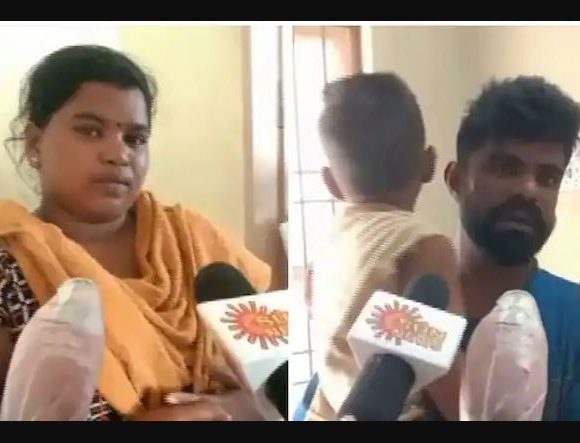MONSOON TOURISM IN INDIA
 Monsoon the word itself makes one happy. The intoxicating smell of the dry Earth getting drenched, the splashing waters and the tiny paper boats sailing on the clogged water make monsoons the favourite season in India. After the long summer months when the heat and the dust ruled the roost, the monsoons are a welcome change. The farmers rejoice in the showers that promise to bring them prosperity. The monsoon season make the peacock dance with joy and the mango flowers bloom
Monsoon the word itself makes one happy. The intoxicating smell of the dry Earth getting drenched, the splashing waters and the tiny paper boats sailing on the clogged water make monsoons the favourite season in India. After the long summer months when the heat and the dust ruled the roost, the monsoons are a welcome change. The farmers rejoice in the showers that promise to bring them prosperity. The monsoon season make the peacock dance with joy and the mango flowers bloom
Monsoons the season of rainbows and raindrops is certainly not to be wasted indoors. The very special season of the year, Monsoon brings everything to you fresh. The washed streets and the fresh leaves seem to smile with you. Monsoons is certainly not getting all packed in rain coats, Monsoons are fun time. Getting wet, splashing and swimming or wading through knee deep waters, sailing paper boats are some little deeds you may indulge in. You may try out an Ayurveda vacation in the monsoons too. The best way to rejuvenate your soul and replenish your body, Ayurvedic is a great option for monsoons.
TOP MONSOON TRAVEL DESTINATIONS OF INDIA
1.LADAKH
In the furthest far flung corner of northern India, in Ladakh near the Indus Valley, lies the town of Leh at 3,505 meters (11,500 feet) above sea level. This remote place has become a popular tourist destination since Ladakh was opened to foreigners in 1974. It’s the most beautiful and most common entry point to the Ladakh region.Bounded by two of the world’s largest mountain ranges and surrounded by alpine desert, Leh’s dry barren landscape full of historic Buddhist monasteries makes it an incredible sight to behold. This Leh travel guide will help you plan your trip.
Getting to Leh:
Flights to Leh operate regularly from Delhi. Flights are also available to Leh from Srinagar and Jammu. Alternatively, the roads to Leh are open for a few months of the year, when the snow has melted. The Manali Leh Highway is open from around June to October each year, and the road from Srinagar to Leh is open from June to November. Bus, jeep, and taxi services are all available. The trip takes around 2 days because of the difficult nature of the terrain. If you have the time and are in good health, do travel by road as the scenery is amazing.
When to Visit Leh:
The best time to visit Leh is between May and September, when the weather is the warmest. Ladakh doesn’t experience rain like elsewhere in India, so the monsoon season is the perfect time to travel to Leh.
2. AMARNATH
Amarnath cave is a famous shrine in Hinduism and is dedicted to Lord Shiva.It is located in the Indian state of Jammu and Kashmir.snowy mountains surround the cave.The cave itself is covered with snow most time of the year except for a short period of time in summer when it is open for pilgrims..Inside the 130 feet high Amarnath cave that faces south,is the Shiva Linga,which waxes during may to September and gradually wanes after.Two other ice formations are there to represent Parvathy and Shiva’s son Ganesha. . Hundreds of thousands of pilgrims visit it during the Amarnath in July/August.
The capital of Jammu and Kashmir,Srinagar is famous for its lakes and numerous house boats that dot them.It is known as Paradise on Earth.Srinagar Is also known for its traditional handicrafts and dry fruits.
3.THE VALLEY OF FLOWERS NATIONAL PARK
The stunning landscape of The Valley of Flowers, in northern India’s state of Uttarakhand (previously known as Uttaranchal), comes alive with the monsoon rain. This high-altitude Himalayan valley has around 300 different varieties of flowers, which appear as a bright carpet of color against a mountainous snow capped background. The Valley of Flowers is only open from April to October as it’s covered in snow the rest of the year. It’s the perfect destination for those that love hiking and exploring nature, as it requires a 15 kilometer (9 mile) trek up a steep mountain trail to get there. The incredible beauty waiting at the end is well worth the effort though. The stunning landscape of The Valley of Flowers National Park in northern India’s state of Uttarakhand, bordered by Nepal and Tibet, comes alive with the monsoon rain. The park is spread over 87.5 square kilometers (55 miles), and was declared a national park in 1982.
The Valley of Flowers National Park is located in Chamoli Garhwal, close to Nanda Devi National Park. It’s about 595 kilometers (370 miles) from Delhi, and has an altitude that varies from 10,500 feet to 21,900 feet above sea level.
Getting to The Valley of Flowers:
The nearest airport is in Dehradun, 295 kilometers (183 miles) away, and the nearest railway station is in Rishikesh, 276 kilometers (170 miles) away. The closest you can get to The Valley of Flowers by road is Govind Ghat. This requires around a 10 hour drive to Joshimath, then another one hour to Govind Ghat. From Govind Ghat it’s a 13 kilometer (8 mile) trek along a steep, narrow, but well defined mountain trail to base camp at Ghangaria. This will take between 4 to 8 hours, depending on your fitness! The start of the main valley, where all the flowers are, is a further 3 kilometers (1.8 miles) from Ghangaria.
When to visit the valley of flowers
The Valley of Flowers is
only open from the beginning of June until the end of September as it’s covered in snow the rest of the year. The best time to visit is from mid July to mid August, when the flowers are in full bloom after the first monsoon rain. If you go before July, you’ll find hardly any flowers at all. However, you will be able to see melting glaciers. After mid August, the color of the Valley changes quite dramatically from greenish to yellowish, and the flowers slowly die.
4.G0A
Goa is India’s smallest and most liberated state. It was actually a colony of Portugal up until 1961, and a strong Portuguese influence still remains. Goa’s coastline stretches for around 100 kilometers (62 miles) and become extremely popular tourist destinations.However, Goa has much more to offer than just the beach! It’s especially beautiful during monsoon time from June to September, when nature flour
ishes, the rain brings refreshment and romance, and Goa takes on a more traditional flavor. Travel to Goa during the monsoon and you’ll be able to experience it the local Goan way.
Goa’s picturesque wildlife sanctuaries are open all year round. The major ones are Mollem National Park and Cotigao Wildlife Sanctuary. They are harder to reach than Bondla, the smallest and most accessible sanctuary in Goa, though. As well as nature trails, Bondla has a mini zoo and deer safari park, which is great for kids. The imposing Dudhsagar Falls, located on the fringe of the Mollem National Park, is at its best during the monsoon as the water rages down from a huge height
Another great place to visit during the monsoon in Goa is acclaimed spice plantation in Savoi,reached by an enchanting drve through dense jungles and hills from
Ponda. An evening boat cruise up the Mandovi River from Panaji is enjoyable, and Goa’s historic character-filled buildings provide much interest. Fishing in any of Goa’s rivers is also fun!
Getting to Goa:
Goa is well connected to
the rest of India by air.bus and train. However, the bus can be slow and uncomfortable so try to take the train where possible. Trains on the Konkan Railway can cover the distance from Mumbai to Goa in less than 10 hours, with the best train being theK
st with reformed poachers as guides, bamboo rafting, night time jungle patrols, trips to local villages on bullock carts, and tribal heritage visits.
onkankanya Express. Most trains will stop at Margao (Madgaon), which is Goa’s main train station. Some, such as the Konkankanya Express, will stop at other stations as well.
5.PERIYAR NATIONAL PARK ,KERALA
Periyar extends around the banks of a huge artificial lake that was created by the damming of the Periyar River in 1895. It has 780 square kilometers (485 square miles) of
dense hilly forest, with 350 square kilometers (220 square miles) of this being core park land
Periyar is one of the most popular national parks in southern India, but these days this is more for its tranquil feel than sightings of wildlife, which many people complain can be few and far between at times. The park is known for its elephants, and 30 minute elephant rides through
the jungle are offered. Periyar is located in Thekkady, around 4 kilometers (2.5 miles) from Kumili in the Idukki district of central Kerala.
How to Get to Periyar:
The closest airports are at Maduri in Tamil Nadu (130 kilometers or 80 miles away) and Kochi in Kerala (190 kilometers or 118 miles away). The nearest railways station is at Kottayam, 114 kilometers (70 miles) away. The scenery on the way to Periyar is beautiful, and includes tea estates and spice gardens.
Unlike many national parks in India, Periyar stays open all year round. The most popular time to visit is during the cooler, drier months from October to February. However the aroma of the moist vegetation in the monsoon also gives it special appeal. The best time for viewing elepha
nts is during the hotter months of March and April, when they spend the most time in the water. Don’t expect to see a lot of wildlife during the monsoon season because there’s no need for them to come out in search of water. Periyar is also best avoided on weekends due to crowds of day tourists.
Safaris are only carried out by boat, making Periyar a peaceful place to be. The lake is particularly captivating at sunset. However, the best way to explore Periyar and see the wildlife is to participate in one of the many eco-tourism activities that are on offer. These include hikes through th
e fore
Periyar National Park is one of the few national parks in India to remain open during the monsoon. Most of the activities in Periyar are still weather dependent, but boat trips operate throughout the monsoon season. If you do visit Periyar during monsoon time and go trekking, keep in mind that leeches also come with the rains so make sure you wear the leech proof socks that are available at the park.
6.SHILLONG
The other famous destination for monsoon vacation in India is Shillong which is popularly known as the Scotland of East.Shillong has its own unique nature beauty.During monsoon,lakes and waterfalls plays rhythmical music and wind whispers through dense forests. Shillong was a popular hill station during colonial times, with leftover features being a championship golf course and polo ground, Victorian bungalows, and churches.The main attractions of this beautiful place is Elephant falls,Ward lakes etc.
There are several special monsoon tours that the tourists avail to relish the rains in India. You may take your pick from the specially designed, attractively priced Monsoon Holiday tours.
So get ready for some Monsoon Masti in India. During the monsoons, holiday packages are available at an all time low. After the summer heat the tourists desert the hill resorts and the beaches. Monsoon sees empty accommodations. Without reservations too you may plan and enjoy a holiday in monsoons. All overall expenditure goes low in the monsoons and attracts the budget tourists out of the house. Monsoon tourism in India has seen a big boom in the recent past owing to the price lashes in the holidays. With no teeming tourists around Monsoons allow you to enjoy your holiday to its fullest. So this monsoon, pack your bags and get going to the destination of your choice and hear the raindrops make music in your heart and have a memorable monsoon……………….
SREEREKHA RANJITH NAIR
Sreerekha.ranjith@gmail.com








